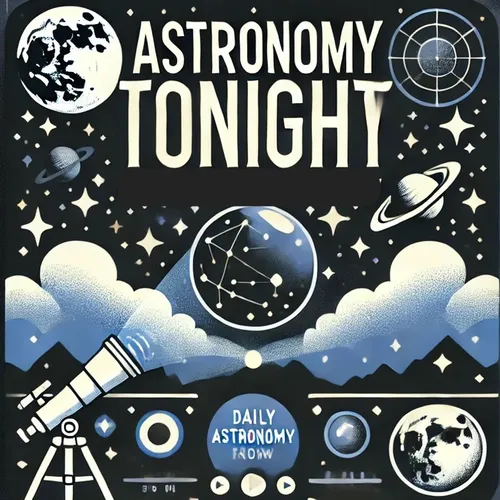Astronomy Tonight for - 10-29-2024
- Author
- Inception Point Ai
- Published
- Tue 29 Oct 2024
- Episode Link
- https://www.spreaker.com/episode/astronomy-tonight-for-10-29-2024--62540113
Ah, October 29th! Let's take a cosmic journey back to 1991 for a stellar event that had astronomers buzzing with excitement.
On this day in 1991, the Galileo spacecraft, en route to Jupiter, made a historic flyby of the asteroid 951 Gaspra. This marked the first time a spacecraft had ever encountered an asteroid up close, opening up a whole new chapter in our exploration of these enigmatic celestial bodies.
Gaspra, named after a resort in Crimea (because even asteroids need a vacation spot), is an S-type asteroid residing in the inner region of the asteroid belt. As Galileo zipped by at a distance of just 1,600 kilometers (about 1,000 miles), it captured unprecedented images of this irregularly shaped space rock.
The flyby revealed Gaspra to be a battered veteran of the cosmos, its surface pockmarked with craters and grooves. At about 19 kilometers (12 miles) long, Gaspra isn't exactly a heavyweight in the asteroid world, but it packs a punch in terms of scientific value.
The images and data collected during this brief encounter revolutionized our understanding of asteroids. Scientists discovered that Gaspra's surface was covered in a layer of loose rock fragments called regolith, similar to what we see on the Moon. They also found that the asteroid's color varied across its surface, hinting at a complex composition and history.
But perhaps the most intriguing discovery was the presence of those mysterious grooves. Some scientists speculated that these could be signs of past impacts or even evidence of the asteroid beginning to break apart due to its rapid rotation.
This flyby was like a cosmic drive-by, with Galileo snapping pics at a relative velocity of about 8 kilometers per second. Talk about a high-speed photo shoot!
The success of this mission paved the way for future asteroid encounters and sparked a new era of small body exploration in our solar system. It's safe to say that on October 29, 1991, our view of asteroids went from grainy and distant to up close and personal, all thanks to a plucky spacecraft named after a famous Italian astronomer.
So next time you're stargazing on October 29th, give a little nod to Gaspra and the Galileo mission that made space history on this day. Who knows, maybe someday we'll have asteroid resorts named after Earth locations!
This content was created in partnership and with the help of Artificial Intelligence AI
